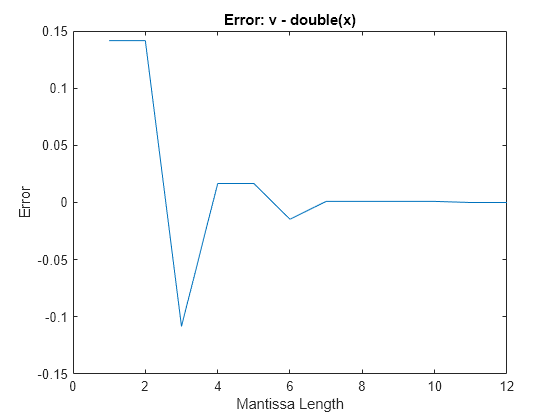CustomFloat
Description
Use a CustomFloat object to define a floating-point numeric data
type with specified word length and mantissa length. Floating-point data types defined by a
CustomFloat object adhere to the IEEE 754-2008 standard. For more
information on floating-point data types, see Floating-Point Numbers.
Creation
Syntax
Description
x = CustomFloat(v)CustomFloat object with value v. The
output object has the same word length, mantissa length, and exponent length as input
v.
x = CustomFloat(v, WordLength, MantissaLength)CustomFloat object with the specified word length and
mantissa length.
x = CustomFloat(v, WordLength, MantissaLength, 'typecast')CustomFloat object with the bit pattern of
v and the specified mantissa length. The word length must match the
word length of the input v.
x = CustomFloat(cf)CustomFloat object with value and data type properties of
CustomFloat object cf.
Input Arguments
Properties
Object Functions
Examples
Limitations
The following functions, which support custom floating-point inputs, do not support complex custom floating-point inputs.
Extended Capabilities
Version History
Introduced in R2020a

